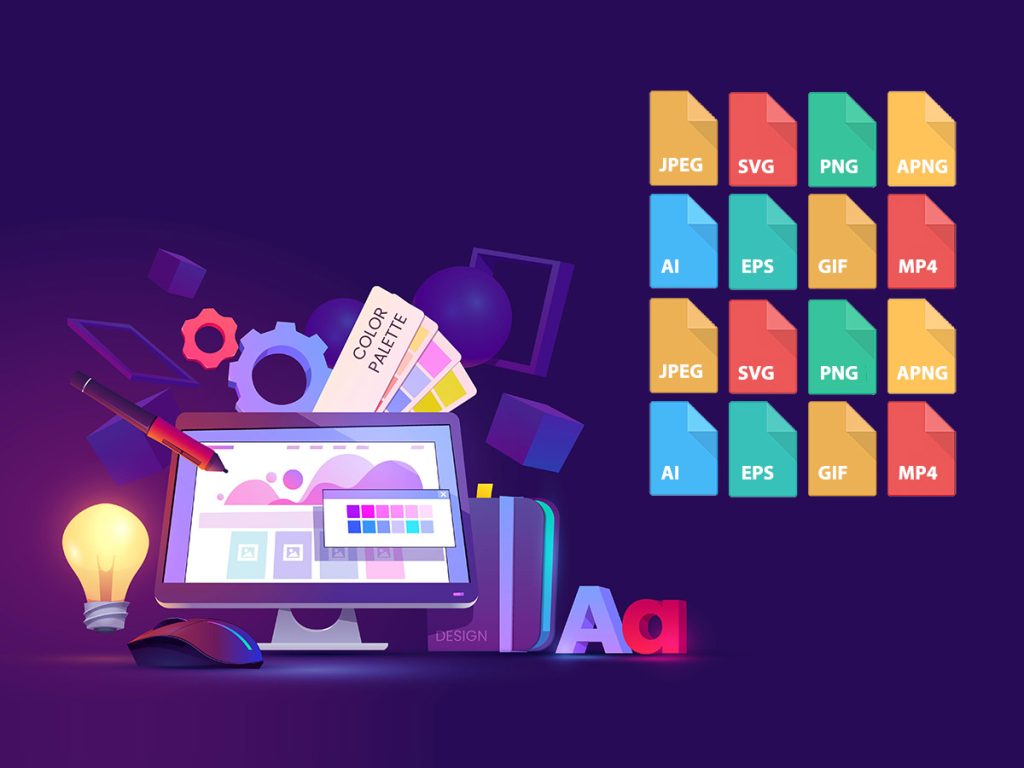Essential File Types for Website Optimization
In the ever-evolving realm of web development and digital content creation, understanding the intricacies of file types is paramount to delivering optimal user experiences. From compression to vectorization, each file format brings its unique strengths and capabilities to the table. In this comprehensive guide, we’ll explore a diverse array of file types, shedding light on their benefits, browser support, and practical applications in website optimization.

JPEG (Joint Photographic Experts Group)
JPEG stands as a stalwart in the world of web imagery, renowned for its efficient compression and widespread compatibility. Its lossy compression algorithm strikes a delicate balance between image quality and file size, making it ideal for photographs and complex graphics. Supported by virtually all web browsers, including Chrome, Firefox, Safari, and Edge, JPEG remains a ubiquitous presence in online environments.
PNG (Portable Network Graphics):
PNG, celebrated for its support of transparency and lossless compression, serves as a versatile solution for web graphics. From logos to icons, PNG files retain image integrity while facilitating seamless integration across various platforms. Notably, all major web browsers, including Chrome, Firefox, Safari, and Edge, offer robust support for PNG, ensuring consistent rendering across diverse user devices.
SVG (Scalable Vector Graphics):
Embracing the ethos of responsive design, SVG emerges as a powerhouse of versatility and scalability in the digital landscape. By representing images as mathematical equations, SVG files adapt flawlessly to varying screen sizes and resolutions. Noteworthy for web developers, major browsers such as Chrome, Firefox, Safari, and Edge boast robust support for SVG, enabling the creation of immersive, visually stunning web experiences.
WebP:
Spearheading the quest for enhanced web performance, WebP stands as a modern image format developed by Google. Leveraging advanced compression techniques, WebP delivers superior image quality at smaller file sizes compared to traditional formats like JPEG and PNG. While adoption continues to grow, support for WebP is widespread among leading browsers, including Chrome, Firefox, and Edge, bolstering its appeal as a go-to solution for web imagery optimization.
APNG (Animated Portable Network Graphics):
Building upon the foundation of its static counterpart, APNG introduces support for animated graphics within the PNG format. While not universally supported by all browsers, APNG finds compatibility with select platforms, including Firefox and Safari. Although its adoption may be more niche compared to other formats, APNG offers a compelling option for adding subtle animations and interactivity to web experiences for users on compatible browsers.
AVIF (AV1 Image File Format):
Emerging as the next frontier in image compression technology, AVIF harnesses the power of the AV1 codec to deliver remarkable compression efficiency without sacrificing image quality. With its promise of smaller file sizes and superior visual fidelity, AVIF holds immense potential for revolutionizing web imagery. While support is currently limited, browsers such as Chrome and Firefox are actively exploring integration, paving the way for broader adoption in the future.
MP4 (MPEG-4):
As video continues to dominate online content consumption, the MP4 format remains the gold standard for seamless streaming and playback. Supported by major browsers including Chrome, Firefox, Safari, and Edge, MP4 files offer high-quality video content while minimizing bandwidth consumption. Whether it’s product demonstrations or captivating storytelling, MP4 empowers content creators to convey their message with unparalleled clarity and impact.
GIF (Graphics Interchange Format):
Renowned for its succinct storytelling capabilities and ubiquitous presence in online culture, GIF remains a timeless favorite for web animations. With its lightweight nature and broad compatibility, GIFs serve as potent tools for conveying emotions, highlighting product features, and enhancing user engagement. Supported across all major browsers, including Chrome, Firefox, Safari, and Edge, GIFs inject personality and dynamism into web experiences, leaving a lasting impression on audiences.
Conclusion
In conclusion, navigating the myriad of file types is essential for optimizing websites and captivating online audiences. By harnessing the strengths of each format, developers and content creators can craft immersive digital experiences that resonate with users across diverse platforms and devices. As technology continues to evolve, staying abreast of emerging formats and browser support remains paramount, ensuring that websites remain at the forefront of innovation and user satisfaction in the ever-changing digital landscape.
Helpful? Share it with your friends

About the author
Derek Durgaram is an entrepreneur with a background in business consultancy. He is the brains behind Green Media, a media production company based in Curacao. GreenLine Communication is a spin off of his company, a service that offers insights and project management within the digital media domain.



